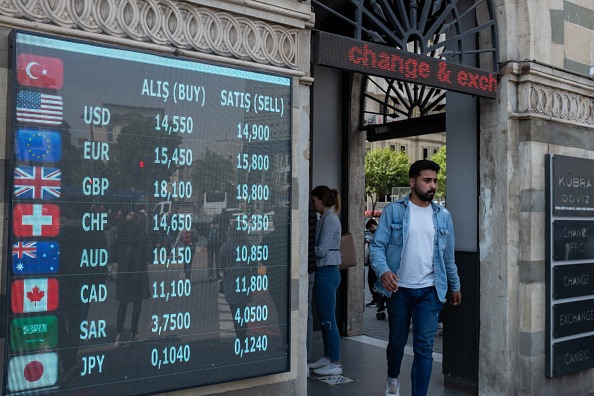Two Bullish Strategies for 2023
When playing a rebound, investors and traders often use long stock or short puts—both of which have produced historically attractive win rates, but with different associated risk profiles.

As of now, the 2023 trading year is a blank canvas. Nobody knows where the market is headed this year, at least not with a strong degree of conviction.
But with valuations in the market already down 20%, it’s likely there will be a sizable group of investors and traders attempting to play a rebound in 2023. And there’s a variety of ways one could execute that strategy.
At the end of the day, it all depends on one’s unique market outlook, strategic approach and risk profile. However, investors and traders looking for more insight into potential investing or trading approaches in 2023 can review a recent installment of Market Measures on the tastylive network.
On this installment of the show, the hosts walk viewers through a comparison of two bullish strategies—long stock and short puts. This comparative analysis provides important insights that should be helpful for all market participants as they strategize for the new trading year.
If you don’t feel like watching, though, read on for further details.
Analysis: Long Stock vs. Short Put
When an investor or trader is playing a rebound in an individual stock, an ETF, or the stock market as a whole, he or she has many available choices.
But a couple of the most popular trading approaches when playing a rebound include buying stock and/or selling puts. Both positions benefit when the underlying in question (stock, ETF, index) rises in value.
The risks of both strategies are also somewhat similar—if the underlying in question declines in value, both positions will likely lose money.
The risk to a long stock position is that the underlying drops (possibly precipitously) and that the associated position incurs losses. After such a drop, a decision must be made whether to hold the stock, or to cut one’s losses and close the position.
When selling puts, a trader is also at risk of getting long stock. If the strike of a short put is breached, and the options are exercised, the short put seller must purchase 100 shares of stock at the strike price for every contract sold.
In this regard, both a long stock position and a short put position can ultimately end up as the same exposure (long stock).
Much like the respective risks of each position, the potential benefits from a long stock position are slightly different than a short put position.
If a trader is expecting a sharp rally in the underlying in the immediate future, then a long stock position might be preferred. However, if the trader thinks the stock could trade in rangebound fashion, before breaking out at some point in the future, then a short put might be preferred.
In the latter scenario, a short put would produce a more attractive return on capital for the expected circumstances. Obviously, a long stock position that sits still at best breaks even. On the other hand, a short put under the same conditions can work perfectly.
That’s because a short put theoretically comes with a buffer built into the position—the premium received from the option sale. For example, if hypothetical stock ABC is trading for $33, and a trader sells the $30 put with 45 days-to-expiration for $1.50, the position breaks even if ABC drops to $28.50.
On the other hand, if the trader purchases long stock for $33/share in ABC, and the stock drops to $28.50, the trader will lose money all the way down.
One should also keep in mind the reverse situation—a rally in ABC. Under that hypothetical scenario, the long stock position does offer additional potential upside rewards, as compared to a short put, assuming it rallies significantly.
These examples help illustrate why a variety of approaches can be considered when playing a rebound. It all depends on what is expected, and the risk profile desired in the position.
Historical Performance: Long Stock vs Short Put
A natural question to ask at this point is which of the two strategies has performed better over time, on average? This was the precise question the tastylive network tried to answer using a comprehensive historical market study.
Leveraging historical data in the three major index ETFs (SPY, QQQ, IWM), the tastylive research team backtested the historical performance of a short put vs. long stock in each of the three index ETFs. The results of those backtests are summarized in the images below.
The data above shows that the short puts produced higher average win rates, and did so with less overall risk. To wit, the largest loss stats for the short put positions were on average more attractive than the long stock positions.
This information may be of considerable value to investors and traders seeking to play a rebound in the markets during 2023. To review this comprehensive market study in greater detail, review the complete installment of Market Measures.
To follow everything moving the markets in 2023, monitor tastylive, weekdays from 7 a.m. to 4 p.m. CDT.
Sage Anderson is a pseudonym. He’s an experienced trader of equity derivatives and has managed volatility-based portfolios as a former prop trading firm employee. He’s not an employee of Luckbox, tastylive or any affiliated companies. Readers can direct questions about this blog or other trading-related subjects, to support@luckboxmagazine.com.



















